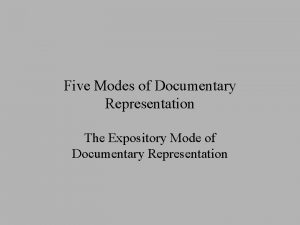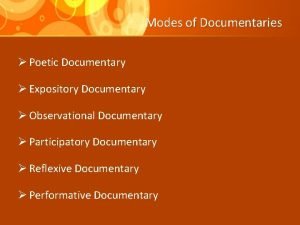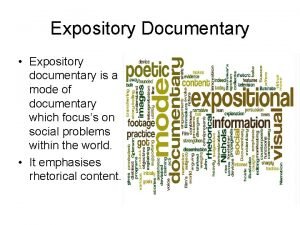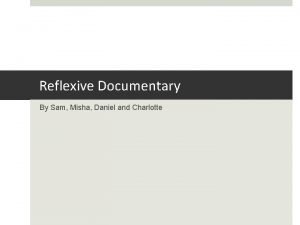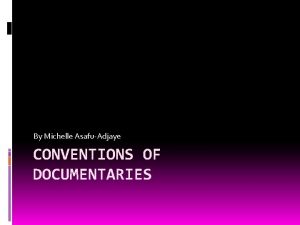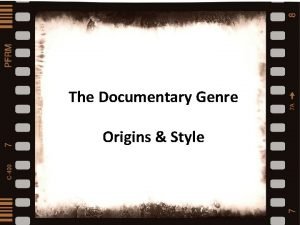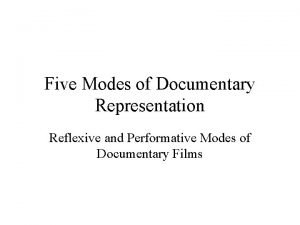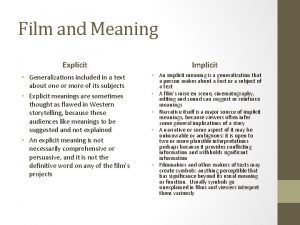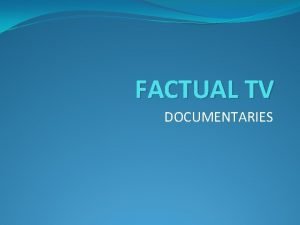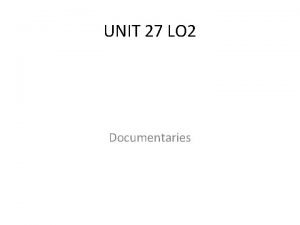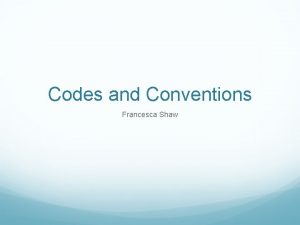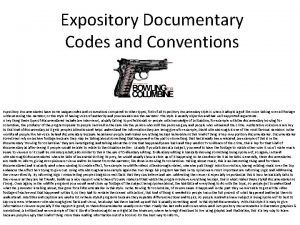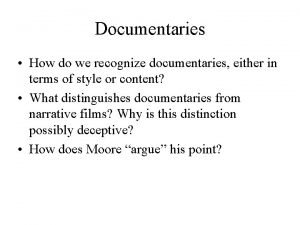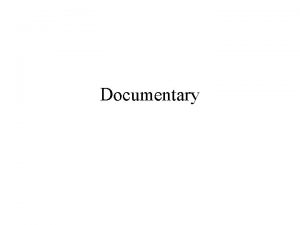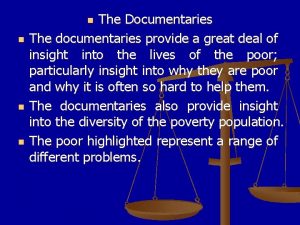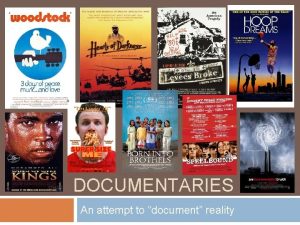Expository In expository documentaries the presenter has the









- Slides: 9

Expository. In expository documentaries, the presenter has the aim of ‘exposing’ the hidden secrets of a particular topic in order to raise the awareness of the viewers. The presenter speaks directly to the viewers with images showing archived or hidden footage. The aim of expository documentaries is usually to educate and inform so therefore everything portrayed in it must be entirely true. An example would be the 2017 ‘America’s Most Wanted Serial Killer’ documentary

Expository documentary clip https: //www. youtube. com/watch? v=b 5 te. P 5 e 98 TY

Reflexive. In a reflexive documentary, the presenter acknowledges the viewers’ presence by providing them with a narrative to the documentary in front of the camera. They allow the viewers to see how the documentary was made and real life events. film

Realism documentaries are based on facts and are accurate and truthful. They are usually about things that have happened in the world and show footage of what has happened to the people included in the documentary. Example – ‘Ross Kemp on Gangs. ’

Realism documentary clip https: //www. youtube. com/watch? v=d. O 1 EQEDu. I 4 o

Dramatisation. These types of documentary use re-enactments and dramatic effects to get a point across to the viewers. Using dramatisation may enable the viewers’ levels of interest to increase and provides a more accurate, fuller picture to them. The only down side of these types of documentary is that they can sometimes appear biased.

Observational. In observational documentaries, the film maker follows the person around in order to observe their daily life. The crew often uses hand-held cameras. In contrast to other types of documentaries, there are no interviews or voiceovers in observational documentaries. An example of these would be MTV ‘Teen Cribs’ which consists of tours given by wealthy families and teenagers of their home.

Observational documentary clip https: //www. youtube. com/watch? v=e. QOPbz. Fr. OGA

Performative. These involve the film makers participating in events whilst filming themselves and speaking to the camera. Similar to observational documentaries, performative documentaries make use of hand-held cameras.
